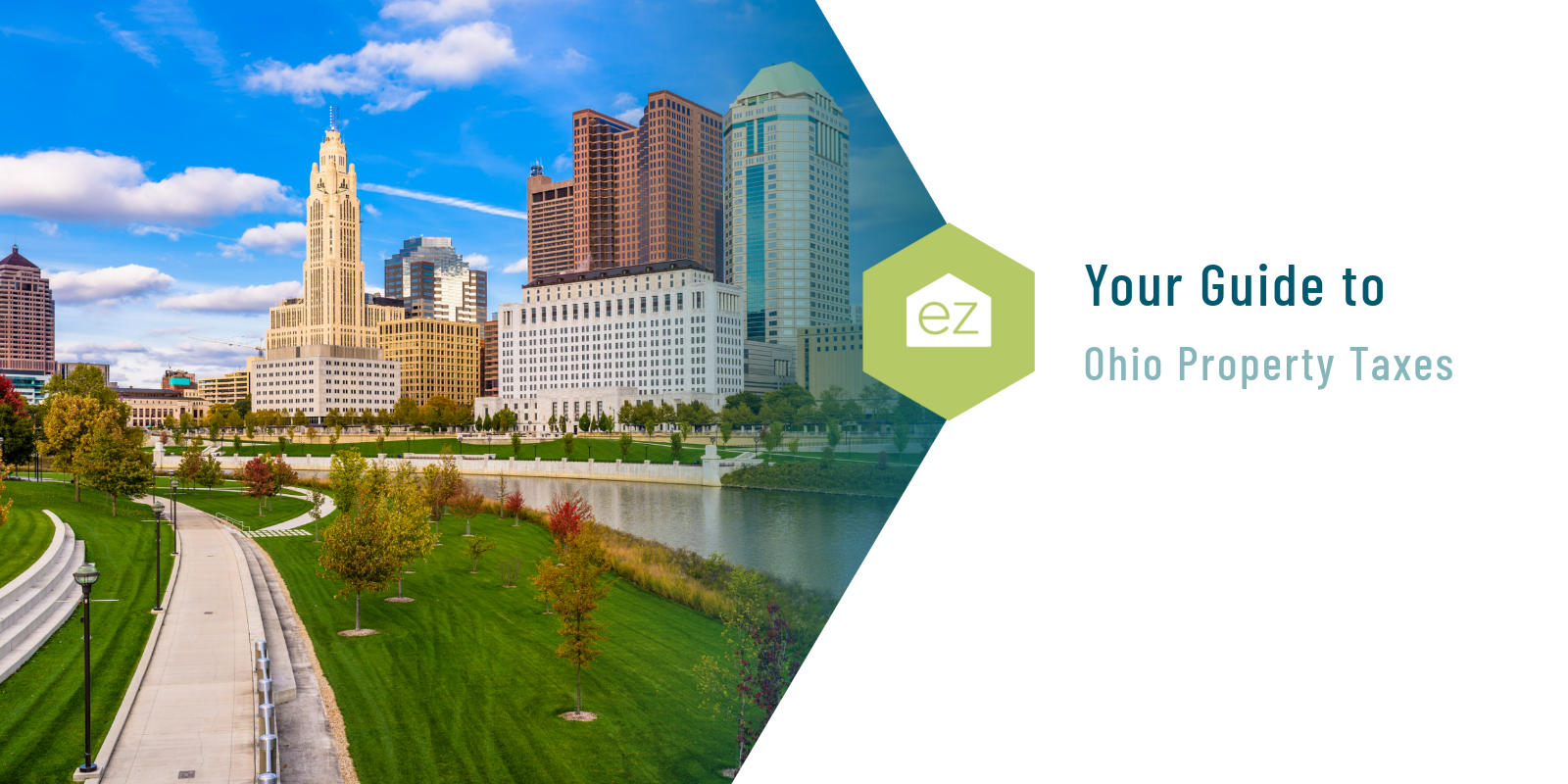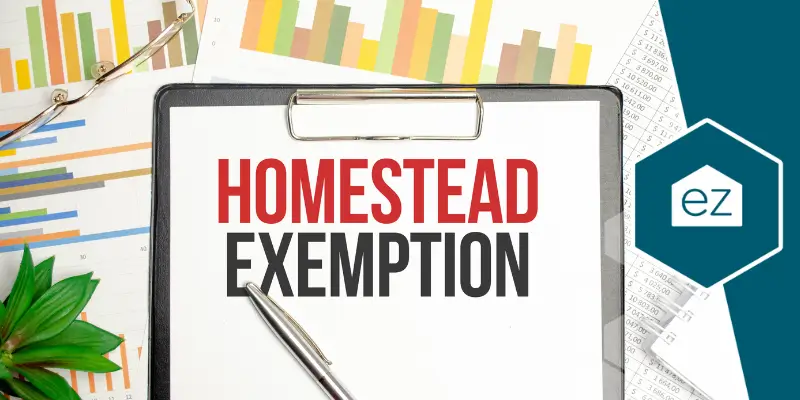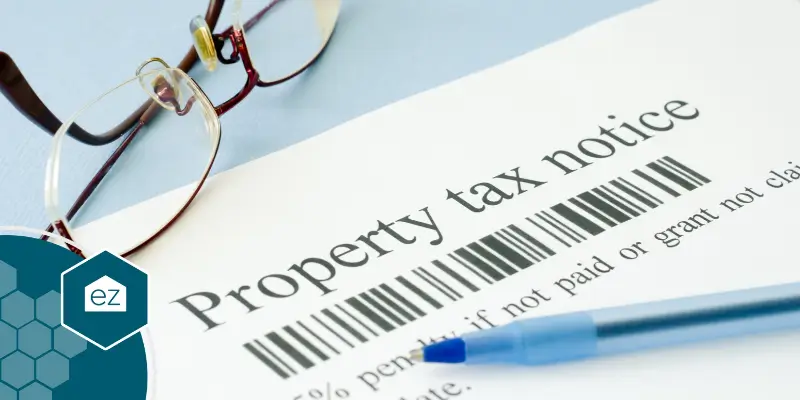Your Guide to Ohio Property Taxes

Your Guide to Ohio Property Taxes
Taxes are simply a part of life; if you buy real estate in Ohio, you’ll be paying them. Knowing how much to budget for your property taxes ensures the home you buy fits into your lifestyle.
Be fully prepared to buy in Ohio by understanding the state’s tax scheme before closing. This article will explain what you need to know about Ohio’s property tax system and how to understand what you’ll owe.
About Ohio Property Taxes

Here’s the bad news about Ohio property taxes: state residents have one of the highest property tax burdens in the nation. That’s according to RocketMortgage, which had the state at no. 39 for lowest property taxes. The analysis used the average effective tax rate, which expresses how much tax was paid compared to a home’s true value. The average effective tax rate in Ohio was 1.56%. For comparison, the highest rate was in New Jersey at 2.49%, while the lowest average tax rate was in Hawaii at 0.28%.
Real estate is considered “real property” in Ohio, and you’ll hear it called “real property tax.” All real property owners –like homeowners–are required to pay real property tax unless they are specifically exempt under the Ohio Revised Code. This is primarily nonprofits, government-owned properties, and the like.
The money collected from Ohio property taxes funds state government programs and services. The remaining portion of Ohio’s real property tax supports local schools, libraries, law enforcement agencies, fire departments, parks, and other public services.
Ohio’s Department of Taxation oversees the taxation process by managing the appraisal work of the county auditors. It does not collect or administer property taxes. Otherwise, property taxes are assessed and collected by Ohio Counties and municipalities.
When calculating a particular parcel’s total tax rate, every levy approved by the local legislature or voters in each taxing jurisdiction where that property is located must be taken into account. These jurisdictions can include school districts, counties, municipalities and townships, among others.
Finally, like in other states, property taxes are expressed as a millage rate. In Ohio, one mil equals $1 for every $1,000 in assessed value. Each taxing jurisdiction sets its own millage rates, so the school board millage is separate from the municipality millage.
How Ohio Property Taxes Work
The short version is that Ohio property taxes are assessed based on the real estate value as determined by Ohio’s county auditor. A tax rate is applied to that value and serves as the basis for Ohio’s property tax collection.
County auditors are responsible for valuing Ohio real property. A full reappraisal occurs every six years, with value updates in the third year of the six-year cycle.
Ohio’s 88 counties are on different sexennial reappraisal schedules. You can refer to this chart for the schedule for 2022-2027 to see when your county is due for a reappraisal or value update.
For a value update, the county’s Division of Tax Equalization runs comparables of recent sale prices to create a “sales ratio.” It then uses the ratio to evaluate property assessments and make what it deems necessary revisions, up or down.
All real property has a taxable value of 35% of the total assessed value unless the land is exclusively used for agricultural purposes. So a $300,000 valued home has a taxable value of $105,000.
In 2019, the state’s average tax rate before reductions factors was 95.13 mils on residential property.
In good news for homeowners, the Ohio Constitution has a limit on property tax levies. Known as the 10-mil limitation, each taxing district can have up to 10 mils of unvoted millage. (Note: This is also known as “inside” millage.) The limitation says property taxes cannot exceed 1% of the property’s true value for “inside” millage unless approved by voters. Since inside mills are charged to taxable values, that creates a statutory limit of 0.35%.
The implication means if home values increase 10%, property taxes increase 10%.
Appealing your property value

Homeowners can’t change their tax millage but can contest the assessed property value if they feel it is too high. Each Ohio County Auditor has a Board of Revision. The owners must file a complaint with documentation proving the property’s fair market value. This can be an independent appraisal from a qualified professional appraiser or a more recent, arm’s length sale.
The value review process starts with the Informal Value Review, which takes place during the fall of the reappraisal or triennial value update years. The county appraiser will hear and review your documentation to decide if a change in value is warranted.
The next option is to file a “Complaint Against the Valuation of Real Property,” which is available each year. Look at the county’s jurisdictional and procedural rules for filing a formal complaint.
Suppose that determination is not to your satisfaction. In that case, the next step is to appeal to the Ohio Board of Tax Appeals. Before filing and presenting your appeal, you can review their documents first to see if you have a strong case.
If you are still not satisfied with the taxation value, the last step is an appeal to the Ohio Supreme Court.
Paying Ohio Property Taxes
Ohio property taxes are paid biannually or in half-year installations. One half must be paid by December 31, with the second half due by June 20. When it comes time to pay your Ohio property taxes, you’ll receive a bill from your county treasurer stating how much you owe.
Ohio Property Tax Credits
Owner-occupied properties qualify for a 2.5% reduction credit on their property taxes for that primary residence, as long the home was their principal residence on January 1 of the year they applied for the credit.
Ohio Homestead Exemption

Ohio offers a homestead exemption for owner-occupied primary residences, reducing the taxable value by up to $25,000. To qualify, the applicant must meet at least one of the following conditions:
- 65 years and older
- Permanently and totally disabled
- At least 59 years old and the surviving spouse of a deceased taxpayer who received the exemption
The spouse of veterans with a 100% disability rating for a service-connected disability or surviving spouses of public service officers killed in the line of duty could qualify for up to a $50,000 homestead exemption credit.
How Ohio Property Taxes Compare
SmartAsset finds Ohio’s property taxes are higher than the national average. The state’s average county tax rate was 1.49% of the home’s value, resulting in annual property taxes of $3,725 in 2022. The national annual value at the time was $2,475.
Cuyahoga County, which covers the Cleveland metro and the city limits, had the highest average effective tax rate at 2.51%. Lawrence County had the lowest rate at an average 0.86%.
Because of variations in home value and millage rates, it can be challenging to make an apples-to-apples comparison of which counties pay the most and least in property taxes. The average effective tax rate looks at how much was paid in taxes compared to the property’s value.
Other counties with the highest average effective tax rates based on 2022 information were Delaware, Franklin, Greene, Lucas, and Montgomery Counties. The lowest rates were found in Lawrence, Monroe, Noble, and Wyandot.
Who can help me with Ohio property taxes?

If you are not sure about Ohio’s property tax laws and regulations, consider consulting an Ohio-based tax attorney or certified public accountant. They can answer questions and provide guidance about Ohio taxes to ensure the process goes smoothly for homeowners.
It is important to remember that Ohio property taxes are subject to change yearly depending on various factors, but mostly because millage taxes for the various taxing entities update each year. The most significant changes occur every three years when property values are updated by the county tax assessor either in a value update or a full reappraisal.
A local real estate agent may also be aware if the school district, county, or municipality are discussing millage rate changes that will impact your taxes.
Start Your Home Search
Preston Guyton
Share this Post
Related Articles
Living In
Your EZ Guide to Living In Salisbury, MD
Living In





